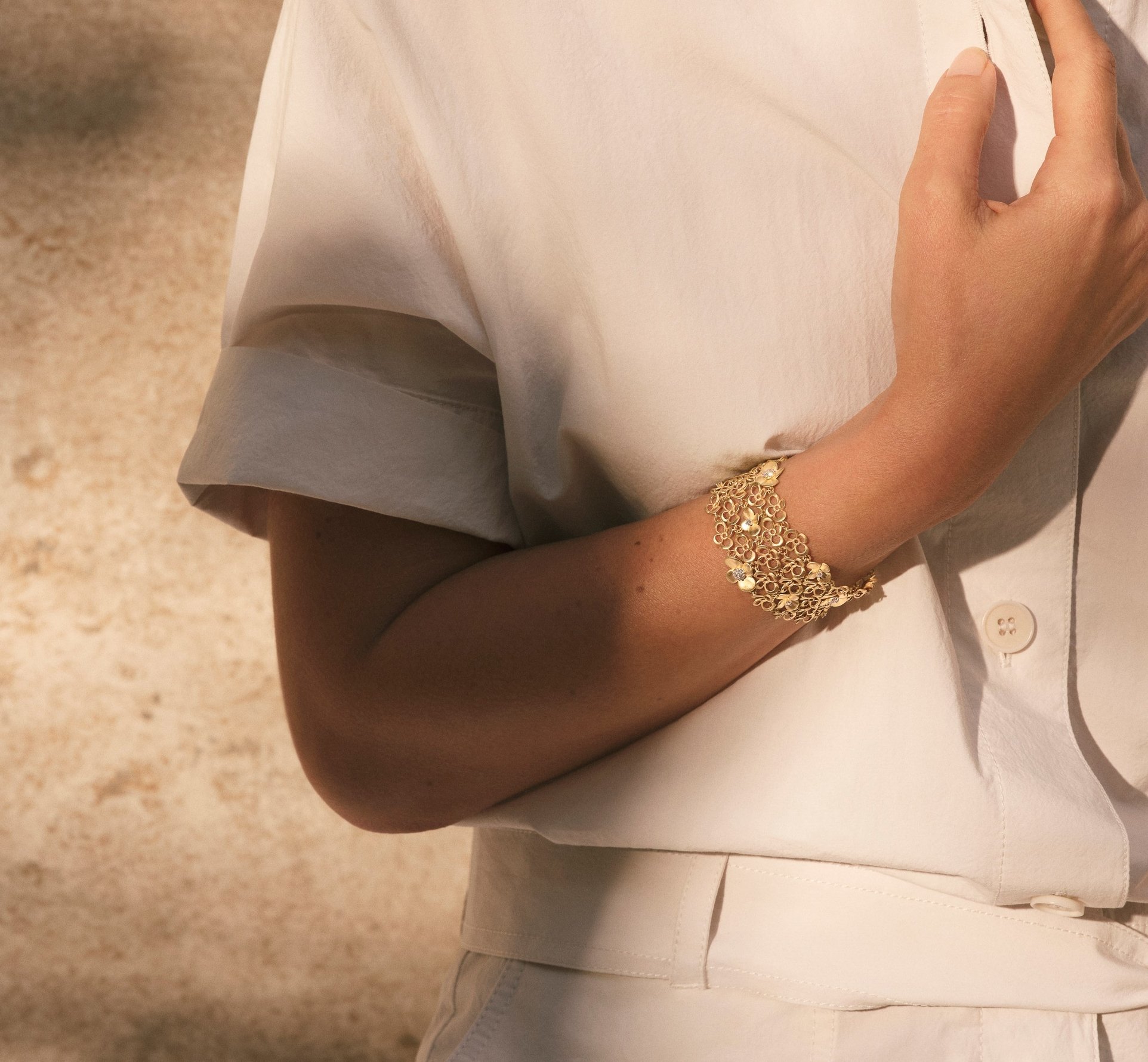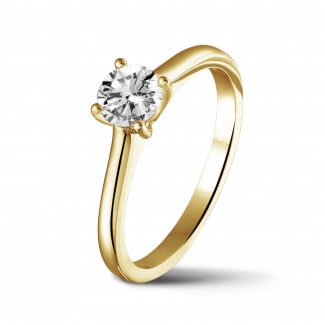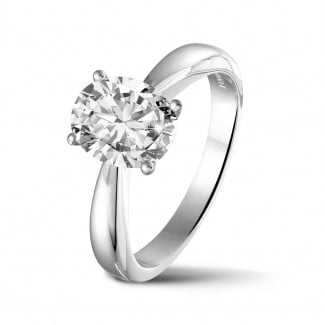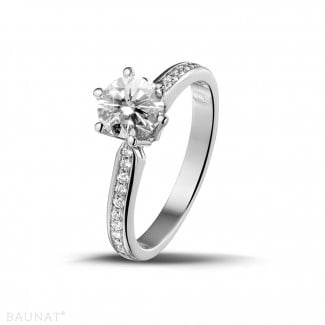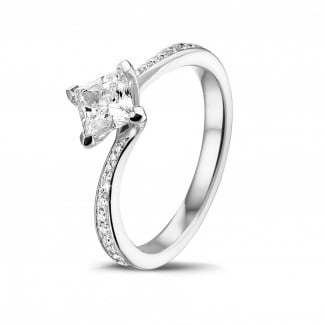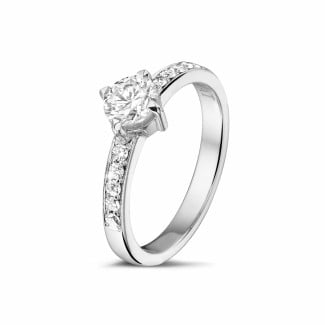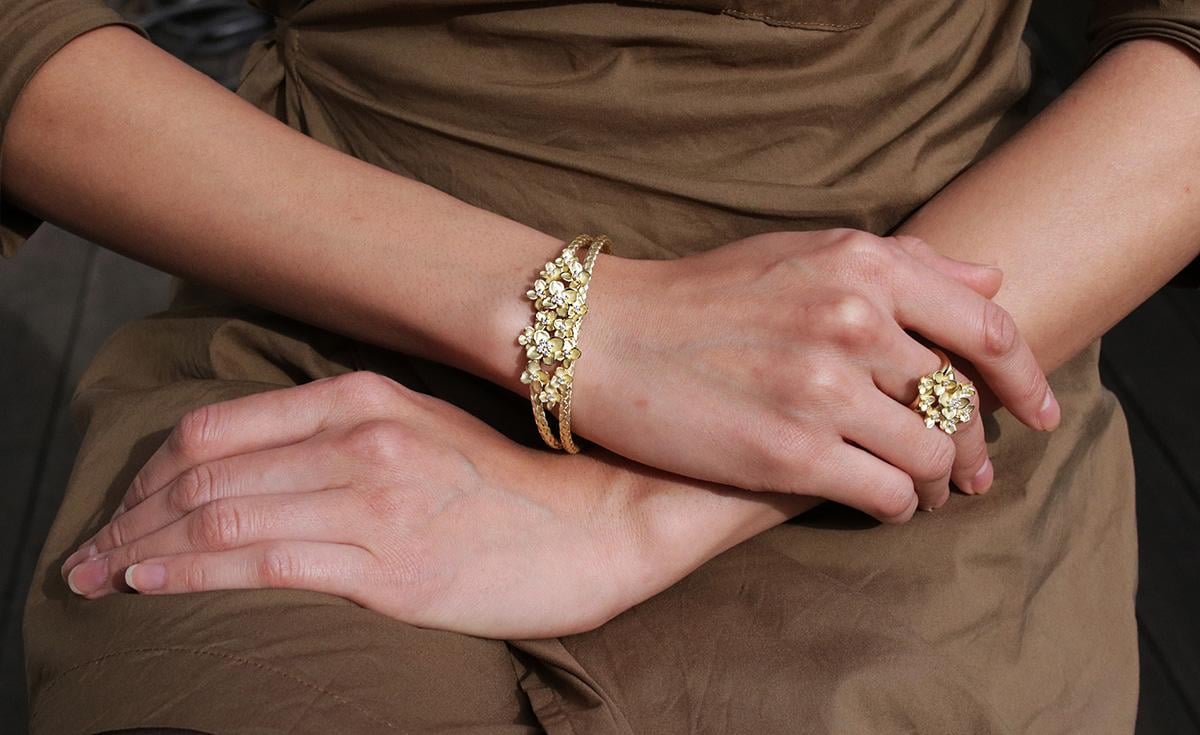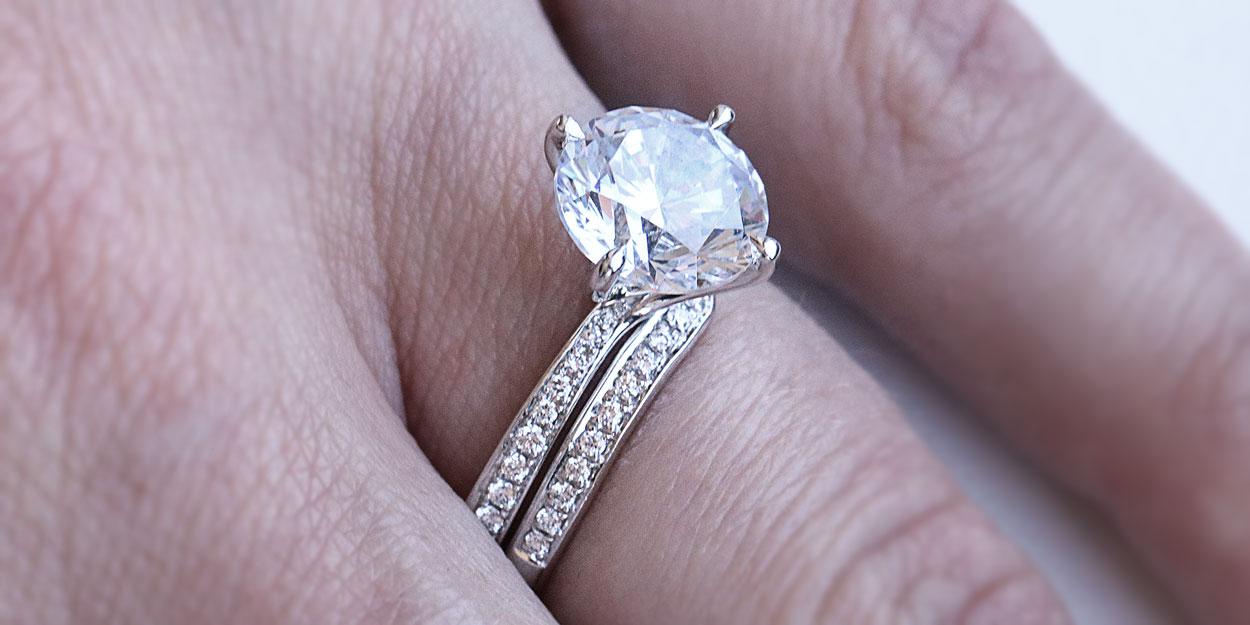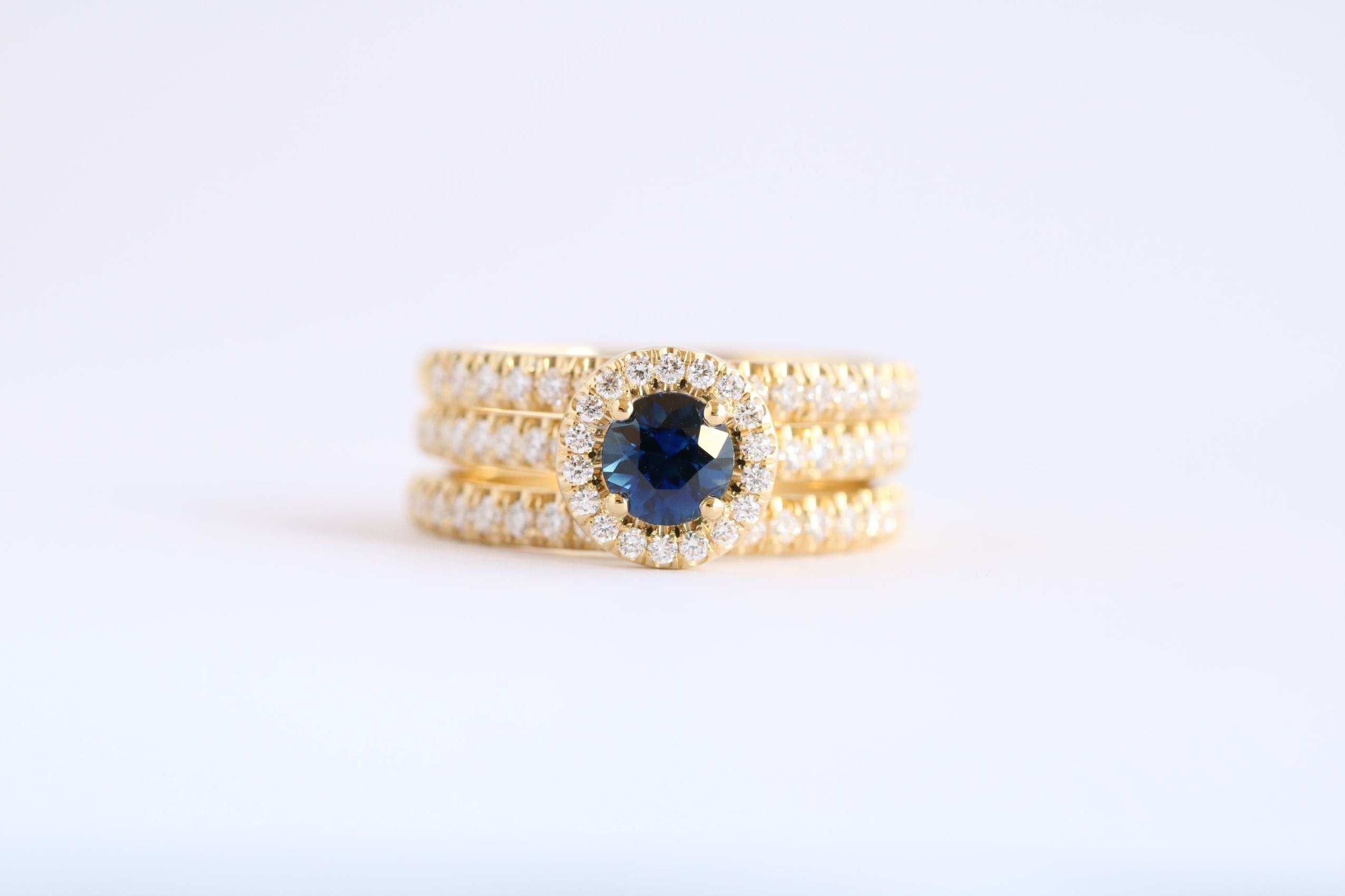Inspirational insights
Blogs in the spotlight
- How do I buy the perfect diamond ring?
- Choosing the perfect wedding ring
- Buying an engagement ring: expert tips & tricks
- Which earrings are the right ones for you?
- How to choose the perfect diamond bracelet?
- How to choose a necklace for ladies?
- Take your time in choosing your watch
- What's the right jewellery for each occasion?
- Why buy diamond jewellery online?
- A guide to building up your jewellery collection
- What types of precious metals are there?
- What types of precious metals are there?
- Jewellery trends and innovations in 2020
- What sorts of diamond setting are there?
- The carabiner clasp
- The spring ring clasp
- The box clasp
- The magnetic clasp
- The ladder clasp
- The toggle clasp
- The bolo clasp
To ensure that a bracelet sits securely on the wrist, over the centuries jewellers have developed a host of different clasps, all of which have their own specific advantages and disadvantages. Here we present the most well-known clasps.
Most viewed diamond jewels
.
The carabiner clasp
The clasp offers many advantages: the functional principle is simple and is not prone to faults, and there is no risk that the wearer will accidentally open the bracelet clasp. At the same time, carabiners can be designed sufficiently small and delicate that they don't look huge or obtrusive, even on a fine bracelet. In addition, a carabiner clasp is not limited to a single eyelet - if multiple eyelets are incorporated into the bracelet design, this enables a simple size adjustment.
The only weakness of this clasp lies in the bracelet itself - the finer the eyelet into which the carabiner hooks, the more the bracelet is liable to break apart under excessive stress.

This offers a secure hold on a par with the carabiner clasp, but is rather more fragile, on account of which this type of clasp is not so frequently used for bracelets or chains.
The box clasp
In order to ensure that the box clasp does not open if inadvertently knocked, with high-quality pieces of jewellery an additional folding safety catch is attached to the side, which hooks into side of the lock.
A very secure and unobtrusive clasp, which can also be integrated into a rigid bangle, for example. The disadvantage lies partly in the handling, as a box clasp is not as easy to open as other bracelet clasps.
The magnetic clasp
Its major advantage is the affordable price. With modern magnet clasps the risk that the magnets will accidentally come loose is relatively low, as the magnets can rarely be pulled apart, but rather can only be opened by sliding them over one another.
The clasp is perfectly suited for bracelets with a design that incorporates larger spherical beads, with the magnets integrated into two half-spheres, meaning that the clasp is completely invisible when closed.
The ladder clasp
The toggle clasp
The security of this clasp when used for bracelets depends on the correct ratio of the length of the rod to the size of the eyelet. The latter should be only just large enough for the clasp to close comfortably, without leaving space through which the clasp could open unintentionally.
The bolo clasp
A very secure clasp is striking and therefore must always fit in as part of the overall design. Very elegant and unusual, the hanging ends may become annoying when worn day-to-day.
Are you interested in a high-quality bracelet with diamonds? The experts at BAUNAT look forward to providing you with some free, no-obligation advice. Contact us now.

Fabienne Rauw
- BAUNAT Antwerp
- My Linkedin profile - Contact me
 Design collections
Design collections Stackable Rings
Stackable Rings Ruby, sapphire & emerald
Ruby, sapphire & emerald Bestsellers
Bestsellers New arrivals
New arrivals Watches
Watches Cufflinks
Cufflinks Rings for men
Rings for men Diamond
Diamond Sapphire
Sapphire Ruby
Ruby Emerald
Emerald Yellow diamond
Yellow diamond Black diamond
Black diamond
 Diamond rings
Diamond rings Sapphire rings
Sapphire rings Ruby rings
Ruby rings Emerald rings
Emerald rings Yellow diamond rings
Yellow diamond rings Black diamond rings
Black diamond rings
 Stackable rings
Stackable rings Cocktail rings
Cocktail rings Rings for men
Rings for men Bestsellers
Bestsellers Diamond rings
Diamond rings Sapphire rings
Sapphire rings Ruby rings
Ruby rings Emerald rings
Emerald rings Yellow diamond rings
Yellow diamond rings Black diamond rings
Black diamond rings
 Solitaire
Solitaire Dangle
Dangle Diamond earrings
Diamond earrings Sapphire earrings
Sapphire earrings Yellow diamond earrings
Yellow diamond earrings Black diamond earrings
Black diamond earrings
 Solitaire
Solitaire 3 stones
3 stones Halo
Halo Gradient
Gradient Diamond necklaces
Diamond necklaces Sapphire necklaces
Sapphire necklaces Yellow diamond necklaces
Yellow diamond necklaces Black diamond necklaces
Black diamond necklaces
 Gradient
Gradient White gold
White gold Yellow gold
Yellow gold Red gold
Red gold Platinum
Platinum Diamond bracelets
Diamond bracelets Yellow diamond bracelets
Yellow diamond bracelets Black diamond bracelets
Black diamond bracelets
 View watches
View watches View watches
View watches Swiss Made
Swiss Made Swiss Collection limited edition
Swiss Collection limited edition Manufacturing process
Manufacturing process Manual or Automatic watch
Manual or Automatic watch Sapphire or mineral glass
Sapphire or mineral glass
 Rings
Rings Necklaces
Necklaces Bracelets
Bracelets Sapphire
Sapphire
 Engagement rings
Engagement rings Earrings
Earrings Necklaces
Necklaces Bracelets
Bracelets
